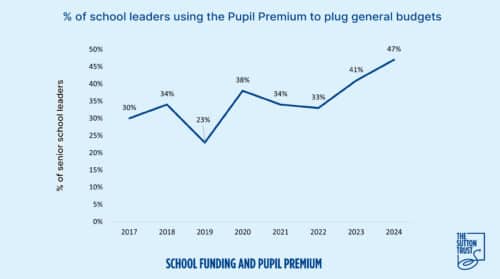Press Releases
Our new research on schools funding acutely shows one of the biggest challenges facing school leaders today.
How do you prioritise an ever-decreasing pot of resources in a world where the cost of everything has risen extortionately? Headteachers and school budget holders are having to make heartbreaking decisions – ones that they know aren’t in the overall best interest of their pupils – just to ensure that they balance their budgets for another year.
It is especially frustrating to see that school leaders are having to make such severe cuts across staffing in schools. Of the school leaders polled, 32% reported cuts to teaching staff, 69% to teaching assistants and 46% to support staff. On the one hand it makes sense: staffing costs will be the biggest chunk of a school budget. This is a natural place to trim expense. However, the reality of this is fewer experienced teachers delivering high quality lessons, fewer teaching assistants running desperately needed reading interventions and fewer pastoral leaders making referrals to mental health services. The impact of this is a reduced quality of education and a greater risk to the health and wellbeing of children.
The proliferation of schools using their pupil premium budget to plug gaps elsewhere in their budget is a similarly exasperating situation. It has risen again since our polling last year with 47% of senior leaders admitting to spending pupil premium money elsewhere. This money is set aside to specifically support our poorest children but what other choices do school leaders have? According to the Institute for Fiscal Studies, between 2010 and 2021 the most deprived schools have seen a 12% real-terms reduction in their budget compared to just 5% for the least deprived. Keeping their school open, staffed and safe must be the priority and so it is an inevitable consequence of diminished funding in a cost of living crisis.
It is therefore understandable that we are also seeing cuts in valuable areas such as sports, extra-curricular and IT resources. How can leaders justify reducing the number of teachers in their schools if they haven’t also looked at these expenses?
So what can we do? Ultimately this comes down to national funding. The government needs to urgently review the funding given to schools, especially those serving disadvantaged communities in order to close the attainment gap. The Trust recently published a policy briefing on ‘Closing the Attainment Gap’, which summarises how the next government could look to do this – including plans for funding.
In the meantime, schools can continue to look for ways to maximise the resources they have. This could include partnering with other schools to benefit from efficiencies of scale, ensuring their spending is informed by research from the Education Endowment Foundation, and forensically analysing their previous budgets to identify what has the most impact on their pupils and funnelling their spending into those things.
Schools can also look for ways to increase their budget such as through the renting of their buildings to the community. Another avenue schools might consider is proactively recruiting children who are eligible for the pupil premium. This will increase the funding their school is allocated whilst also ensuring that our most vulnerable children are prioritised in our resource allocation. The Sutton Trust Fair Admissions Pledge and Award are both in place to support schools wishing to explore this option.
Finally, as individuals in the education sector we can continue to advocate for increased funding for schools and continue to make the best decisions we can about the allocation of limited resources.
The need for improved funding is clear, action needs to be taken now to prevent the education of a generation of children being impacted.
